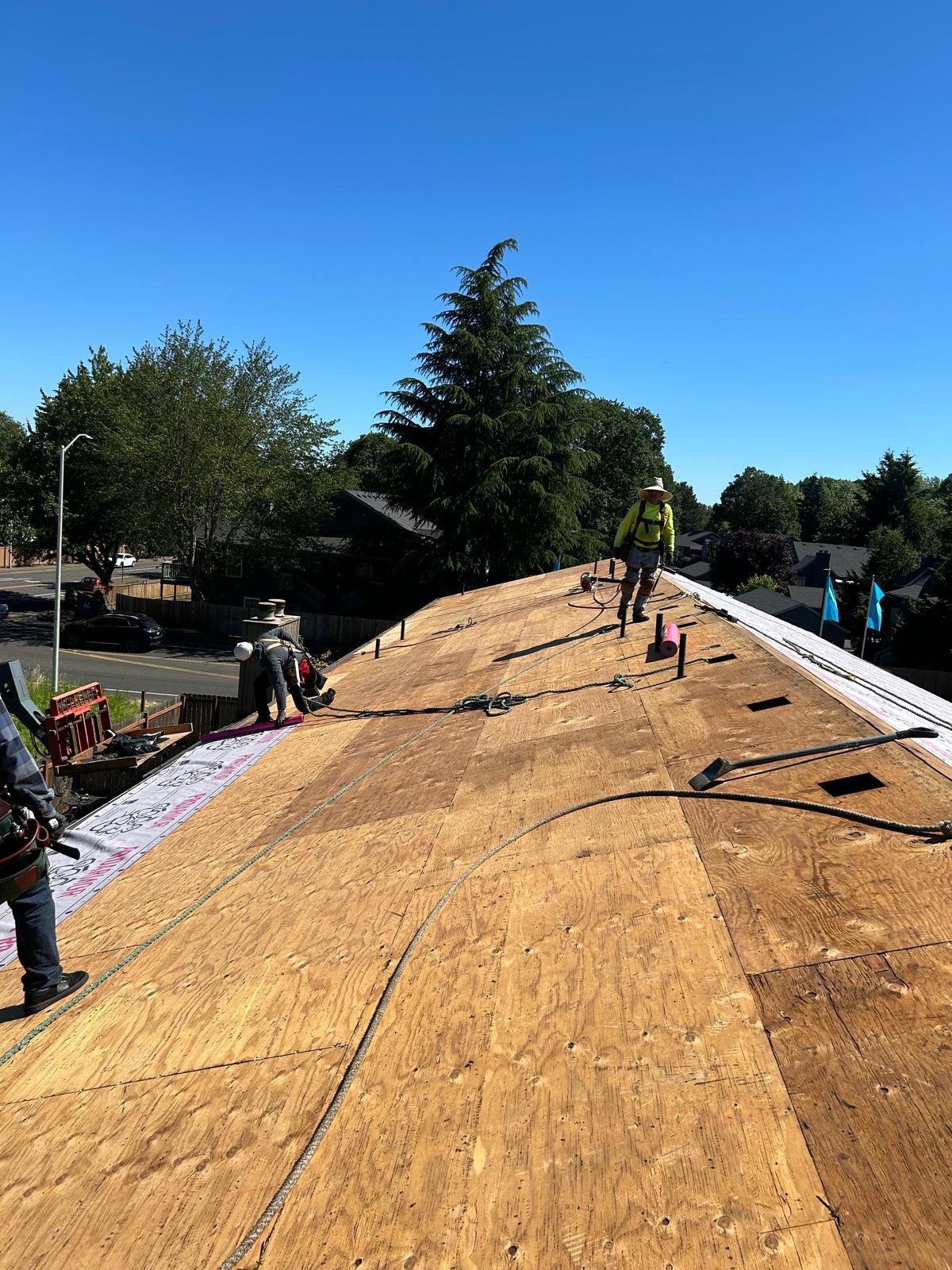Oregon homeowners know that the climate here can be unpredictable. Summers bring intense heatwaves followed by heavy rains that roll in from the coast. While this mix of weather is typical for Salem and the surrounding Willamette Valley, it creates a perfect storm for roofing issues—especially when it comes to roof decking and underlayment. These two layers are critical for a strong, long-lasting roof.
In this article, we’ll break down how summer heat and rain affect your roof decking and underlayment, why it matters for the overall health of your roof, and what you can do to stay ahead of costly repairs.
Why Roof Decking and Underlayment Matte
The roof decking is the base layer of wood sheathing (often plywood or OSB) that supports your shingles. On top of this decking, roofers install underlayment—a moisture barrier that provides protection in case shingles lift, crack, or fail.
Together, these layers are your roof’s hidden defense system. If they are damaged by heat or moisture, the entire roofing structure can quickly weaken, leaving your home vulnerable to leaks, mold, and structural damage.
Heat Damage During Oregon Summer
High summer temperatures in Salem can cause roof decking to expand, warp, or dry out. Prolonged exposure to direct sunlight can make wood brittle, leading to cracking or splitting. Even more concerning, underlayment can deteriorate under extreme heat, reducing its effectiveness as a water barrier.
Shingles can mask these problems for a while, but once heat damage sets in at the decking or underlayment level, it shortens the entire roof’s lifespan.
The Role of Heavy Summer Rain
After heatwaves, Oregon often experiences sudden rainstorms. When underlayment has already been weakened by heat, it becomes less resistant to moisture. Water can seep through cracks or lifted shingles, reaching the decking below.
If roof decking absorbs water, it can swell, rot, and lose structural integrity. Over time, this creates uneven roof surfaces, sagging, and costly repairs. In some cases, water-damaged decking requires complete replacement.
Signs Your Decking or Underlayment May Be Compromised
Watch for these common warning signs:
- Wavy or uneven rooflines
- Interior water stains on ceilings or walls
- Shingles curling or lifting after storms
- Musty odors in the attic (a sign of moisture buildup)
- Sagging areas on the roof surface
Catching these signs early helps avoid widespread damage that could require a full roof replacement.
How Salem Homeowners Can Protect Their Roofs
Routine maintenance is the most effective way to keep roof decking and underlayment in good shape. Here are a few tips:
- Schedule annual inspections. A roofing professional can spot early signs of warping, moisture intrusion, or underlayment wear.
- Ensure proper attic ventilation. Good airflow reduces heat buildup, protecting decking and underlayment from temperature extremes.
- Clear gutters regularly. Blocked gutters force rainwater back onto the roof, increasing the risk of underlayment leaks.
- Replace damaged shingles promptly. Even a small area of missing shingles can expose underlayment to moisture.
Professional Solutions in Salem, OR
When it comes to Oregon’s challenging climate, prevention is always cheaper than repair. Advanced Roofing Technologies Inc. specializes in roof replacement and repair tailored to the unique needs of Salem homeowners. Their experienced team understands how local weather patterns impact roof structures and offers solutions that extend roof life while protecting your home.
If you suspect your decking or underlayment may be compromised, call 503-339-7234 to schedule an inspection and keep your roof performing at its best.
Conclusion
Oregon’s summer weather—combining intense heat and sudden rain—creates tough conditions for roofs. Protecting roof decking and underlayment is crucial for preventing leaks, structural problems, and expensive repairs. By staying proactive with inspections and maintenance, Salem homeowners can ensure their roofs stay strong year after year.





